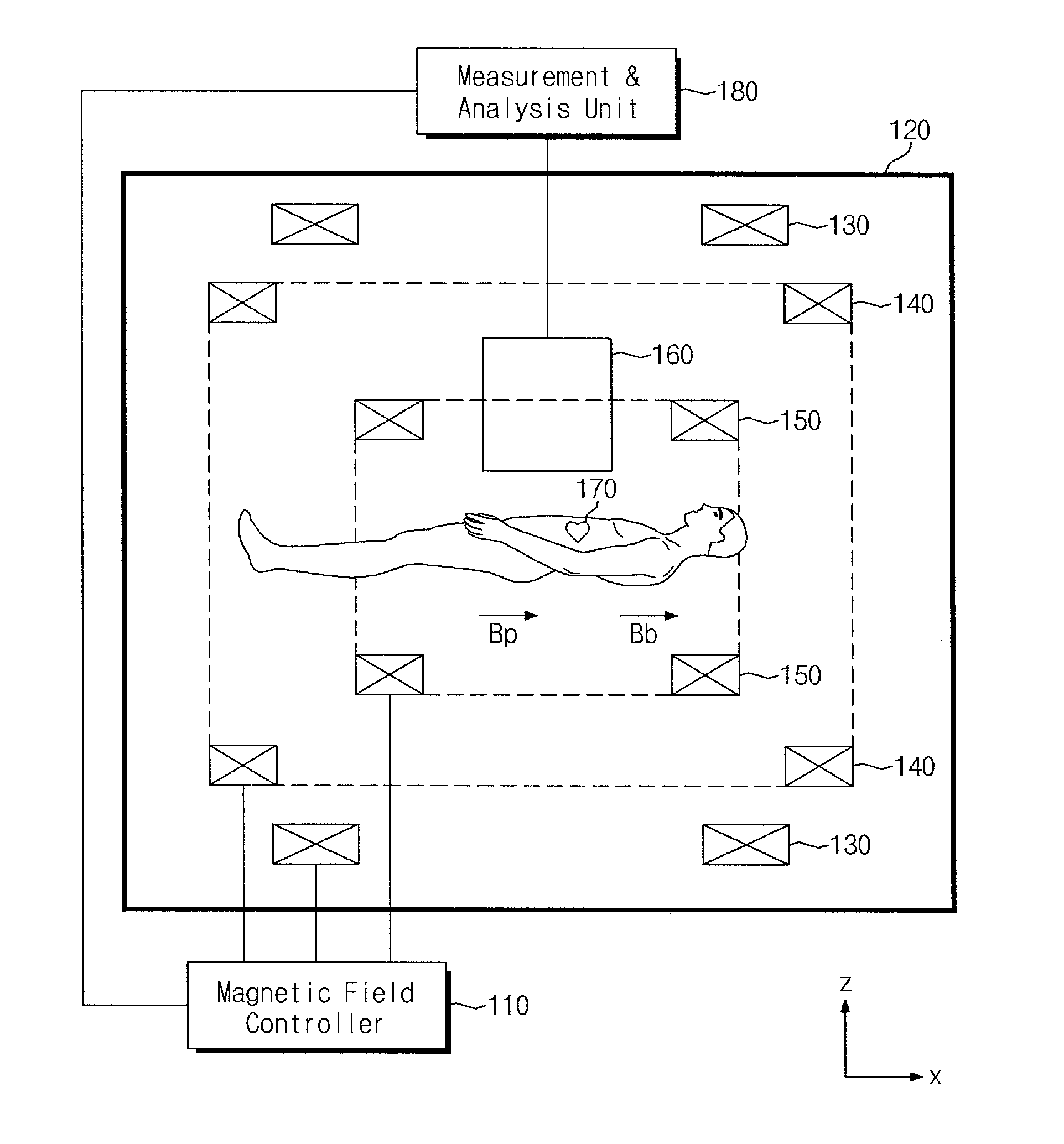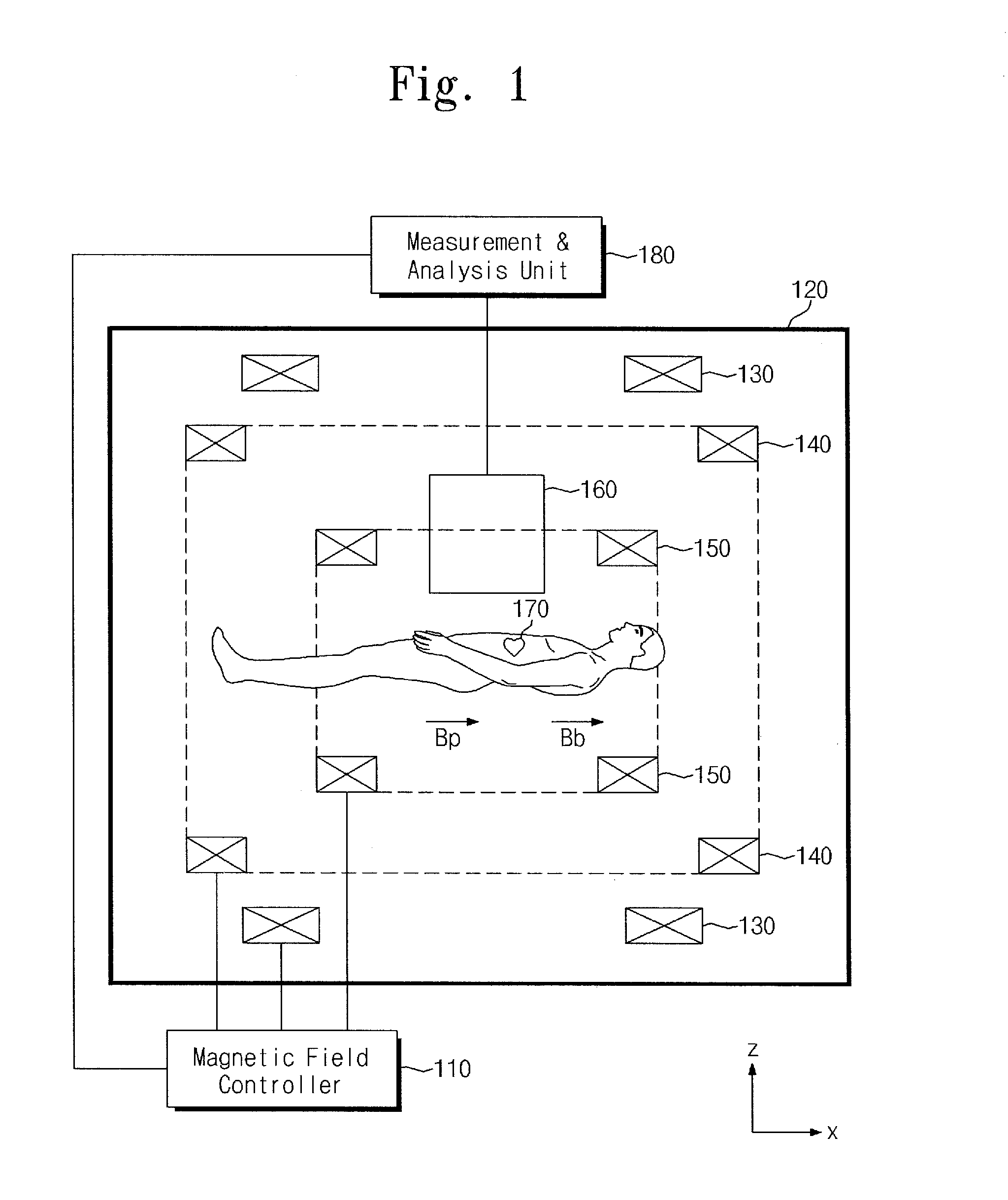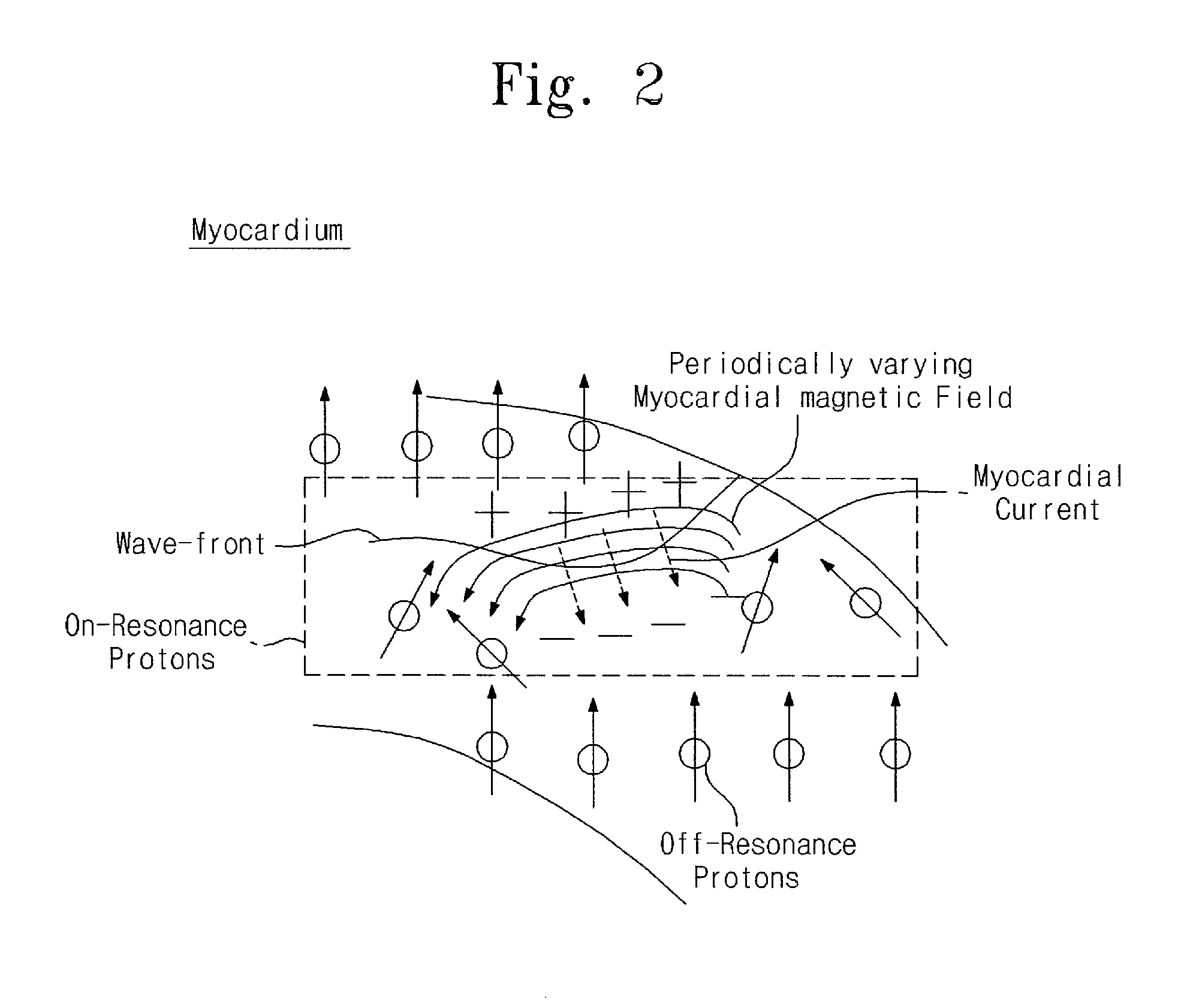Ultra-low-field nuclear-magnetic-resonance direct myocardial electrical activity detection method and ultra-low-field nuclear-magnetic-resonance device
a nuclear magnetic resonance and myocardial electrical activity technology, applied in the field of ultra-low-field nuclear magnetic resonance devices, can solve problems such as sudden cardiac death
- Summary
- Abstract
- Description
- Claims
- Application Information
AI Technical Summary
Benefits of technology
Problems solved by technology
Method used
Image
Examples
Embodiment Construction
[0014]An electrophysiology (EP) test is carried out to test myocardial electrical activity using a catheter. In the EP test, the catheter is inserted into the interior of human body and thus an electrode comes in contact with the endocardium to measure the myocardial electrical activity. This method is invasive and always involves the risk of surgery. Especially, a measurable part of the method is limited to the endocardium. In the case of passing through aorta and vena cava, an electrode cannot approach opposite atrium and ventricle without perforating the septum of the atrium and the ventricle. In order to place the electrode in position, a patient and a doctor have the burden of exposure to radioactivity during the treatment time. Furthermore, the method itself is unable to provide spatial information. Accordingly, means such as a magnetic position tracking device is required for spatial mapping of myocardial electrical activity.
[0015]In the case of an epicardial electrode array,...
PUM
 Login to View More
Login to View More Abstract
Description
Claims
Application Information
 Login to View More
Login to View More - R&D
- Intellectual Property
- Life Sciences
- Materials
- Tech Scout
- Unparalleled Data Quality
- Higher Quality Content
- 60% Fewer Hallucinations
Browse by: Latest US Patents, China's latest patents, Technical Efficacy Thesaurus, Application Domain, Technology Topic, Popular Technical Reports.
© 2025 PatSnap. All rights reserved.Legal|Privacy policy|Modern Slavery Act Transparency Statement|Sitemap|About US| Contact US: help@patsnap.com



